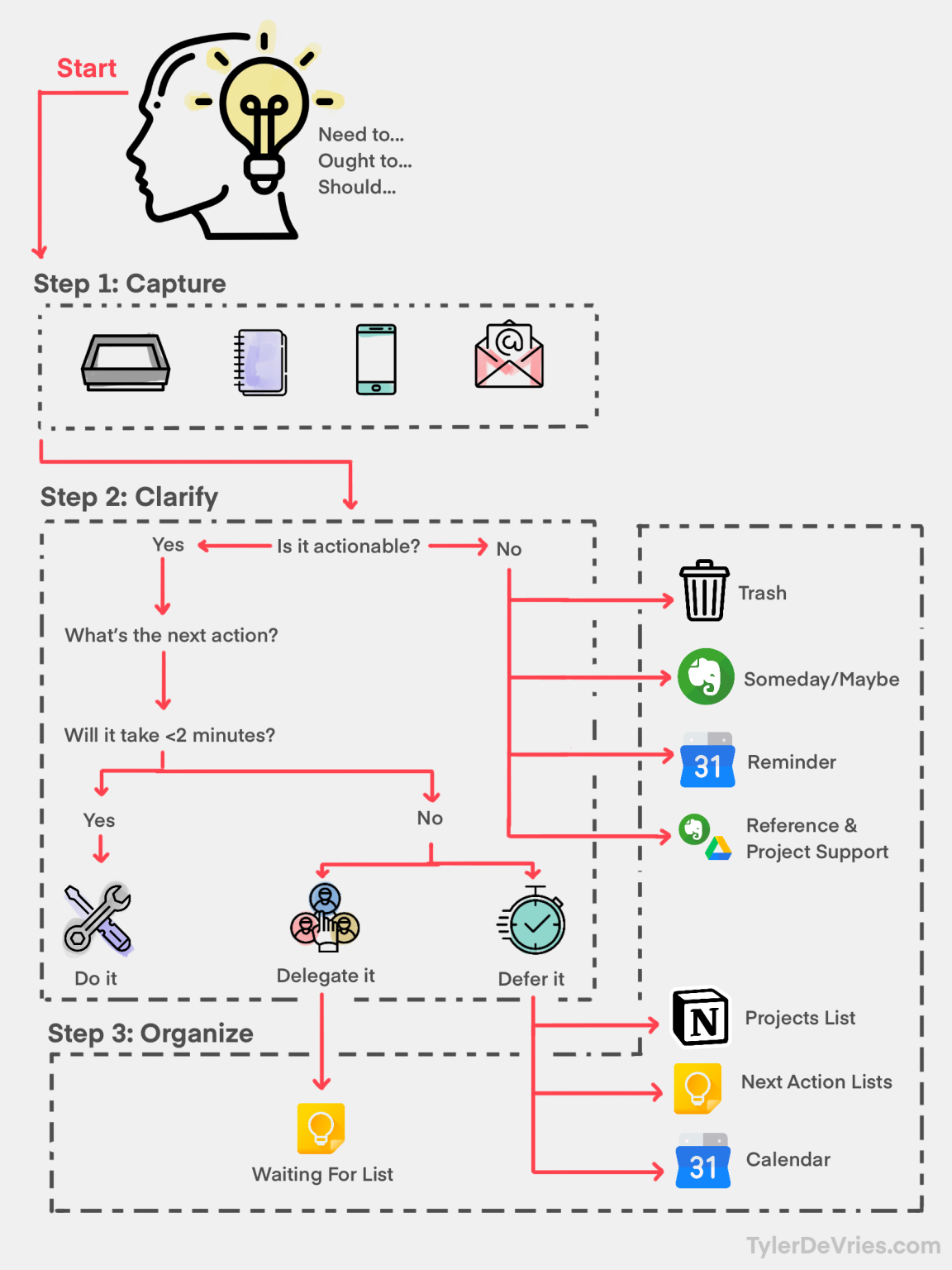Getting Things Done
Published:
Getting Thins Done (GTD): the framework to keep focus and organize our TODOs.
Getting Things Done (GTD) is a productive framework which acts like an operating system for humans. It is simple to understand: only five steps to follow. And I will start trying it with an App called Todoist.
Theories
Key Idea: Keep Our Brains Free & Organize TODOs
Keep Our Brains Free
One of the keys to maintain high productivity is to keep focus. However, occational events and notifications may frequently interrupt our current works. If our brain has more than one active task, we will fail to concentrate or achieve anything.
To keep our brains free, we need a reliable place where we can store the non-active tasks and free our brains. During the context switch, we decide what to process next.
Organize TODOs
So far we know we store non-active tasks outside of our brains, which are also called TODOs. We should figure out the best way to sort the tasks by contexts (at home or at work), by priority, and by easiness. Then, we might have our own sheduling algorithm: for example, after some challenging tasks, we can do some easy but have-to-do tasks in between.
There are more detail in the article.
Five Steps
- Step 1: Capture everything that has your attention
- Step 2: Clarify what needs to be done
- Step 3: Organize information so that you can find it later
- Step 4: Reflect and prioritize your work
- Step 5: Engage in the right activities
The following is the overview of the GTD Workflow by Tyler DeVries. I will save my words here and you should read his original artical Getting Things Done: The Ultimate Guide to Personal Productivity.
